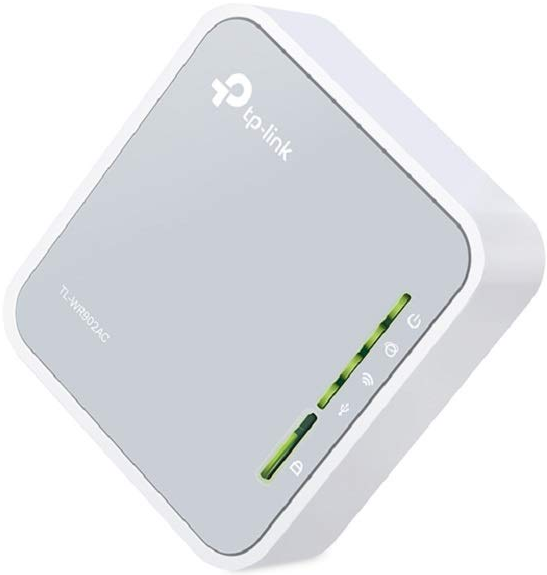
I’ve now been a full time Developer Evangelist for 4 years (at two different companies). Over this period of time, my travel requirements have steadily increased. At this point I am averaging travel two out of four weeks every month and over the next two months, I will be in ten different locations, including international travel to Australia.
Like most people in Developer Evangelism (or Developer Relations or Developer Advocacy), my travel expenses are covered by the company I work for. So, clean, decent hotels are the baseline. I am very particular about my “creature comforts” when I travel, and most hotels - even great ones - tend to fall short.
In this post, I share with you my essentials for travel along with links. What follows is 100% opinion. YMMV!
What you Need to Get There
At $85 for five years, TSA Precheck is well worth the cost. If you’re not familiar with the service, you make an appointment at a local office or at an airport. You get a background check and you get finger-printed. Once approved, you get to go on a faster line at the airport. And, more importantly, you don’t have to remove your belt or lightweight jacket. Nor do you have to take your laptop out of its case. Recently, I’ve also purchased Clear. This gets you through security even faster. When you register for Clear, your retina and finger prints are scanned. At the airport, you go to the Clear kiosks and scan your retina or fingerprints. Once verified, you’re escorted to the front of the pre-check line and you need only show your boarding pass to the TSA Agent. You don’t even have to show your id! Clear is more expensive at $179 / year and it’s not available at all airports.
As often as possible, I try not to check luggage. I use carry-on luggage. I like to get on and off the plane and out of the airport as quickly as possible.
I’ve gone through a number of iterations with carry-on luggage. In the past, I’ve been super cheap - and paid the (actual) price. That is, luggage that falls apart, or has wheels that lock up or wear out, or is not designed well for efficient packing. I recently purchased the Bigger Carry-On by Away and it’s superb. The wheels are smoothy-smooth. The zippers are tough, but easy to open and close. Inside, the right section has a metal-framed mat that sits over your clothes and has straps across it that when tightened, compress everything down. The left section is a spacious open compartment for loose items, like shoes. I chose the battery, which has a 10,000mAh ejectable battery pack. It’s perfect for quick charging while waiting to board at the airport. It comes in at $245 and (most importantly) has a lifetime warranty. I’ve spent way more than this on a bunch of cheapo luggage with basically no warranty.
What you Need when You’re There
When I arrive at a hotel, I like to make it my own. It usually takes me 5 - 10 minutes to “customize” the room. But once I’m done, everything is just the way I like it.
Hotels have Shitty Internet
Hotel WiFi tends to be slow at best, and insecure at worst. Using a VPN on hotel WiFi can make it even slower. Fortunately, most hotels have a wired connection. That’s why I travel with a TP-Link compact wireless router. This serves two purposes. The first is that I get better speed. The second is that all my devices are all ready to connect to the WPA2 protected network. This alleviates the need to navigate the usually terrible captive portal flow on devices like my Amazon FireTV Stick.
This brings me to the next point.
Hotels have Shitty TV
There. I said it! As much as I love Mario Lopez, I’m tired of him being the first thing I see when I turn on a hotel tv. I cut cable a long time ago. I’m a creature of habit and I don’t like to have to endure commercials and E! entertainment just because I am at a hotel. One of the first things I do is pop my Amazon FireTV Stick into an available port on the TV.
My favorite hotels have a module - often embedded in furniture - that allows you to plug an HDMI device right in. Often times, I have to go hunting around the back of the TV for an available port.
Occasionally, a hotel will have any access to ports on the TV blocked off. That’s why I bought this cheap HDMI coupler. In these cases, I can just hijack the HDMI cable coming out of the cable box and connect it to my FireTV without needing access to the back of the TV.
Hotels are Mad Dry
I rarely get sick. But, I’ve been getting sicker more often as I amp up my travel schedule. Being trapped in a metal test tube with everyone else’s germs and then going to a dusty, dry hotel - well, it’s enough to turn anyone into a germophobe.
I found this great little travel humidifier that Feng Shui’s up the hotel room a bit. It may be psychosomatic, but I don’t get dry throat or cough when I use it on the road.
As an aside, I use the Quip toothbrush (full disclosure - that is an affiliate link). It turns out that the plastic tube the Quip comes in is perfect for keeping long body of the humidifier in. You just have to be careful to let it dry out from time to time so you don’t end up with a science experiment.
Hotel Power Outlets are Infuriating
It seems that most of the hotels I stay at - even really nice ones fall into two camps with regard to power outlets. Either there aren’t enough or there’s a bunch located across the room in some inconvenient spot.
This is something that’s improving as a number of hotels I’ve stayed at recently have clocks or lamps with power outlets and USB ports.
I travel with this 5 outlet wonder. In addition to the 5 3-prong power outlets, it has a retractable cord, 2 USB-A ports and even a USB-C port. I will sacrifice a lamp on the night table to have this plugged in.
Honorable Mentions
There’s a whole bunch of other kit I have with me to make traveling easy and functional.
I use the eBags Professional Slim Laptop Backpack. It’s got a ton of storage while still being reasonably slim. It always fits under the seat on the airplane.
I love the Omnicharge product line and I’ve backed their products on Kickstarter. The one I use now is the Omni 20+. It’s beefy 20,000mAh battery is in a lean enclosure with an unholy number of ports, including USB-C, USB-A and a standard 3-prong 120V outlet. You can plug nearly anything into it and charge it via nearly any of its ports. I can run my 15” MacBook Pro off it for nearly 2 hours. It even has 10W wireless charging. I can just place my phone on top of it and bam - it’s charging.
I always have a couple of retractable ethernet cables on me to use when I’m onsite with a customer or in the hotel room using my WiFi router.
Getting the right size travel containers for shampoo, body wash, etc. can be a pain. It needs to be 3oz or less to be in my carry-on. It needs to be totally leak proof. These silicon travel tubes do the trick nicely.
The Full Travel Kit
I hope this post helps you if you travel a lot as I do.
Here’s the full list of my travel gear:
- The Bigger Carry-on from Away
- eBags Professional Slim Laptop Backpack
- Omni 20+ AC/DC/USB-C Portable Power Bank
- Travel Power Strip 5 Outlet Surge Protector with Retractable Cord Smart USB Ports and Type-C Port
- TP-Link AC750 Wireless Portable Nano Travel Router
- Cable Matters 2-Pack Retractable Ethernet Cable
- Amazon Fire TV Stick
- Quip Electric toothbrush
- USB Cool Mist Humidifier Travel Air Humidifier
- AmazonBasics Hanging Travel Toiletry Kit Bag
- Gear Silicone Squeezable Travel Tubes
- AmazonBasics HDMI Coupler (2 Pack)
I’ve also organized this on kit where you can see all the items in one place.
Feel free to shoot me any questions at: [email protected] or tweet at me: @afitnerd


